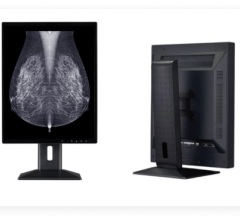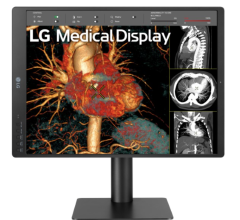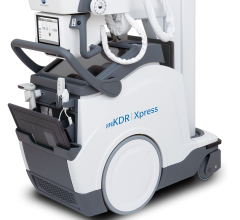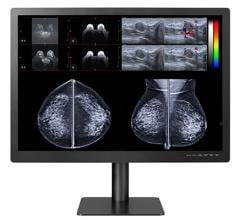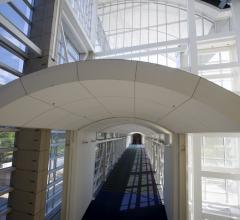Realizing most radiologists evaluating new flat panel displays may not be savvy on how display screens are constructed or all the features, here is a quick overview. This article includes a brief history of how medical-grade display technology has evolved over the past decade and what to look for on the most current product lines.
Evolution of Displays
Medical imaging display technology migrated from cathode ray tube (CRT) — the old style, heavy, bulky TV type monitors — to lighter, thinner flat panel liquid crystal displays (LCD) over the last decade.
LCDs do not produce any light by themselves, so they need a backlighting source to illuminate an image and make it visible. Originally, LCD screens used cold cathode fluorescent lamp (CCFL) technology. CCFL displays consist of a fluorescent tube connected to a voltage inverter board, which provides power to the backlight.
Medical-grade monitor vendors are now transitioning to newer light-emitting diode (LED) screens. LED displays are more compact, brighter, enable better contrast ratios, offer truer colors, use much less energy and generate less heat than CCFL displays. LEDs use a matrix or a strip of LEDs instead of a fluorescent tube, and do not require inverters. Another major advantage of LED displays is service life. They can offer about 100,000 hours of life, compared to CCFLs, which may only be rated for about 20,000 hours.
For example, Eizo Nanao converted to a fully LED-backlit series of LCD monitors as of its most recent product releases in September 2012, eliminating its CCFL product offerings. At RSNA 2012, NDS Surgical Imaging completed its release of a new family of LED backlight surgical displays. LED backlights run cool, eliminating the issues with cooling fans for dissipation in older technologies. The displays’ brightness is also fixed at 500 cd/m² for the life of the product.
OLED Enters the Market
The next major innovation in display technology is organic light-emitting diode (OLED) screens, which offer smaller components, faster response time than LCD, and the ability to display quick motion with virtually no blur. An OLED display works without a backlight, so it can display deep black levels and can be made thinner and lighter than an LCD. In low ambient light conditions, an OLED screen can achieve a higher contrast ratio than an LCD. The technology also offers a much wider viewing angle compared to LCDs, because OLED pixels directly emit light. OLED pixel colors appear correct and unshifted, even as the viewing angles near 90 degrees.
At RSNA 2012, Sony showed the first U.S. Food and Drug Administration (FDA)-cleared OLED medical grade display, the PVM-2551MD OLED 25-inch surgical monitor. It incorporates technology to achieve pure black, faithful to the source signal. By providing superb color reproduction, especially for dark images, the vendor says surgeons can observe very subtle details such as the faint color difference between various tissues and blood vessels.
Increasing Resolution
Each vendor offers an array of medical-grade monitors that are specifically designed to accommodate the various resolutions and brightness levels required by specific imaging modalities, ranging from computed tomography (CT), X-ray, magnetic resonance imaging (MRI) and higher resolutions required by mammography.
Sony introduced a new technology at RSNA 2012 called independent sub-pixel drive (ISD) on its LMD-DM series of high-luminance, high-contrast medical displays. It uses three independent sub-pixels in a single pixel to enable a 5 MP display to achieve a resolution up to 15 MP and a 3 MP display up to a maximum of 9 MP.
Built in QA Monitoring
Most medical-grade displays now have built-in quality control (QC) monitoring systems, often integrated into the screen bezel. These measure brightness and gray scale tones and calibrate the display to the DICOM Part 14 standard. This can help automate QC tasks and reduce monitor quality control workload and maintenance costs.
Eizo’s RadiForce line of monitors offers a digital uniformity equalizer (DUE) function to ensure optimum backlight luminance uniformity, which the vendor says is difficult to attain due to the inherent characteristics of LCD monitors. The systems also have sensors to detect when the user is away from the display and prompts the monitor to switch to power save mode, and resumes normal operation when the user returns.
Barco’s recently released Eonis clinical display family integrates a built-in front sensor. It automatically aligns image quality every time the display is turned on so images always appear exactly like they are supposed to, on every display. The displays also have built-in digital imaging and communications in medicine (DICOM) settings. Barco’s entire medical display portfolio integrates with the online MediCal QAWeb service for quality assurance and remote asset management. The software provides automated quality assurance checks and detailed reports, making it easy for healthcare IT to centrally and remotely manage and configure displays across a healthcare organization.
At RSNA 2012, Double Black Imaging and Wide Corp. demonstrated a new line of auto-calibrating LED displays. They use the X-Cal Web-based calibration software suite, which allows remote DICOM calibration and conformance, luminance adjustment, reporting, MQSA testing and documentation, e-mail alerting, scheduling and enterprise-wide display management. Double Black Imaging also demonstrated its new X-Cal Mobile app, which allows for complete enterprise control on iPhone, iPad and Android devices.
Infection Control Screens
To comply with increasingly stringent disinfection guidelines at medical facilities, many medical displays are now designed with special seals or seamless front construction and made of materials that are easily cleaned with typical hospital products. These designs first came out for use in operating rooms and cath labs, where screens needed to be designed to be easily be wiped down for infection control. These features are now appearing in main line displays.

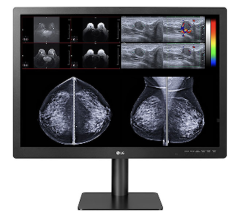
 March 12, 2024
March 12, 2024 
